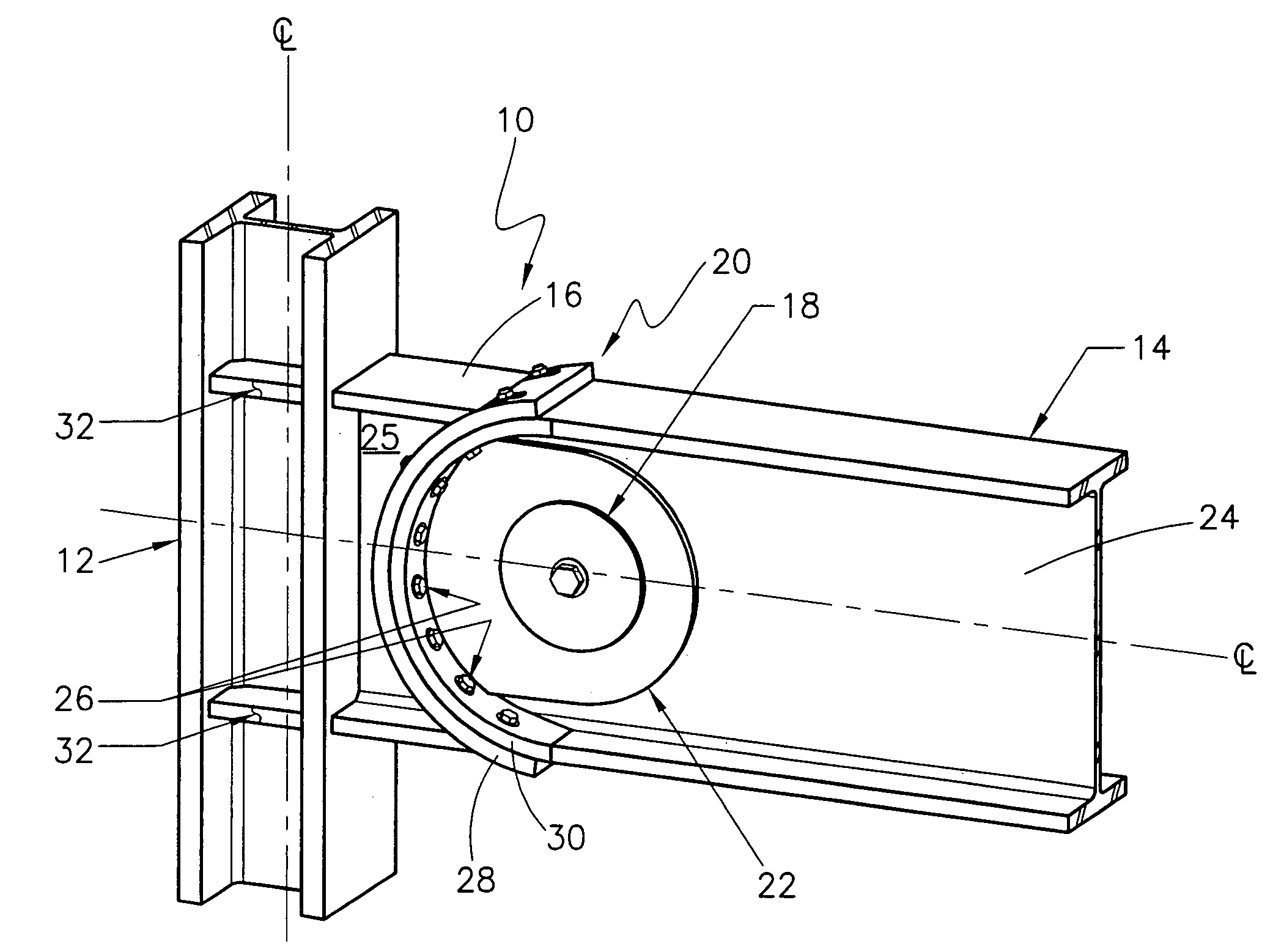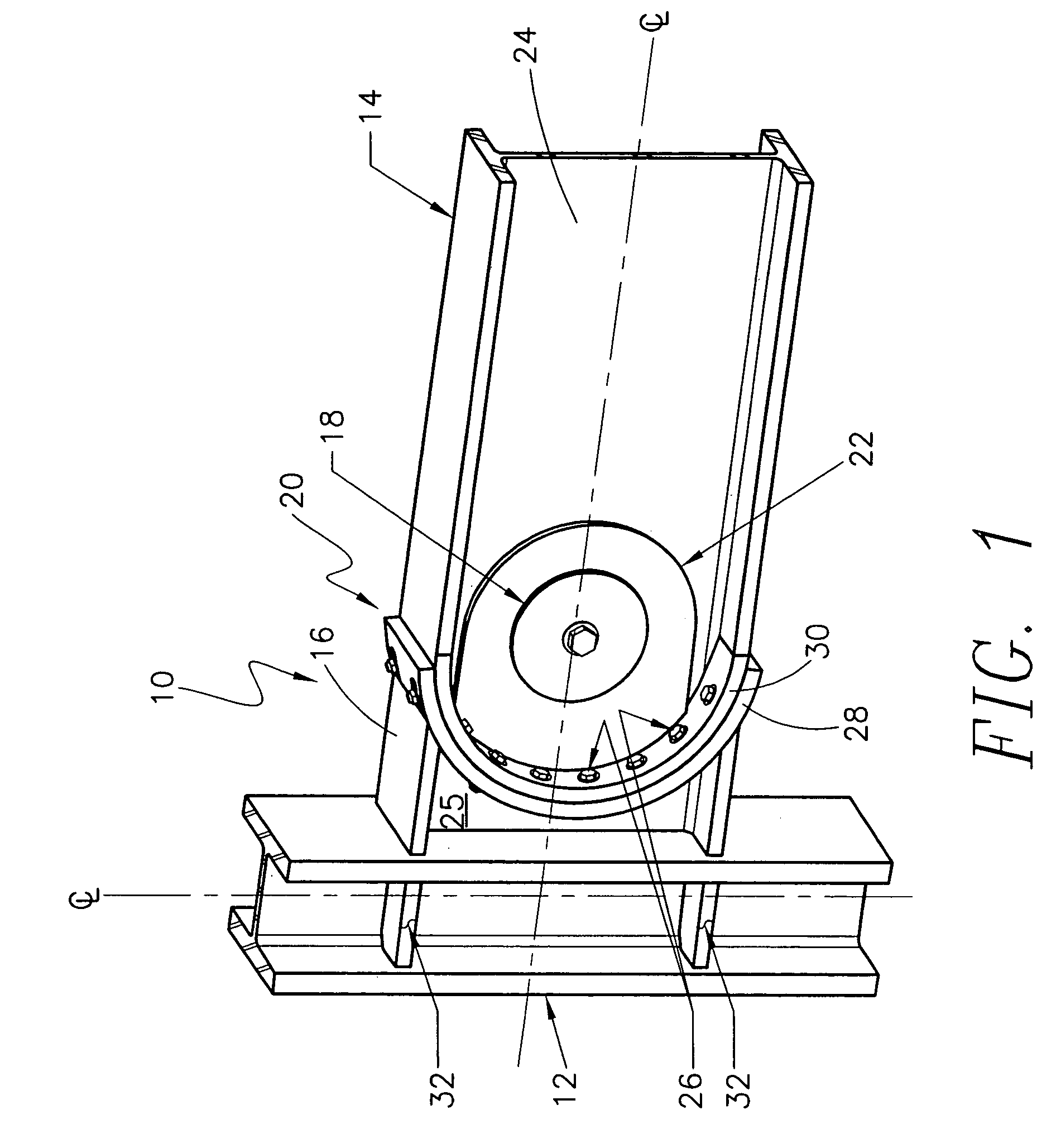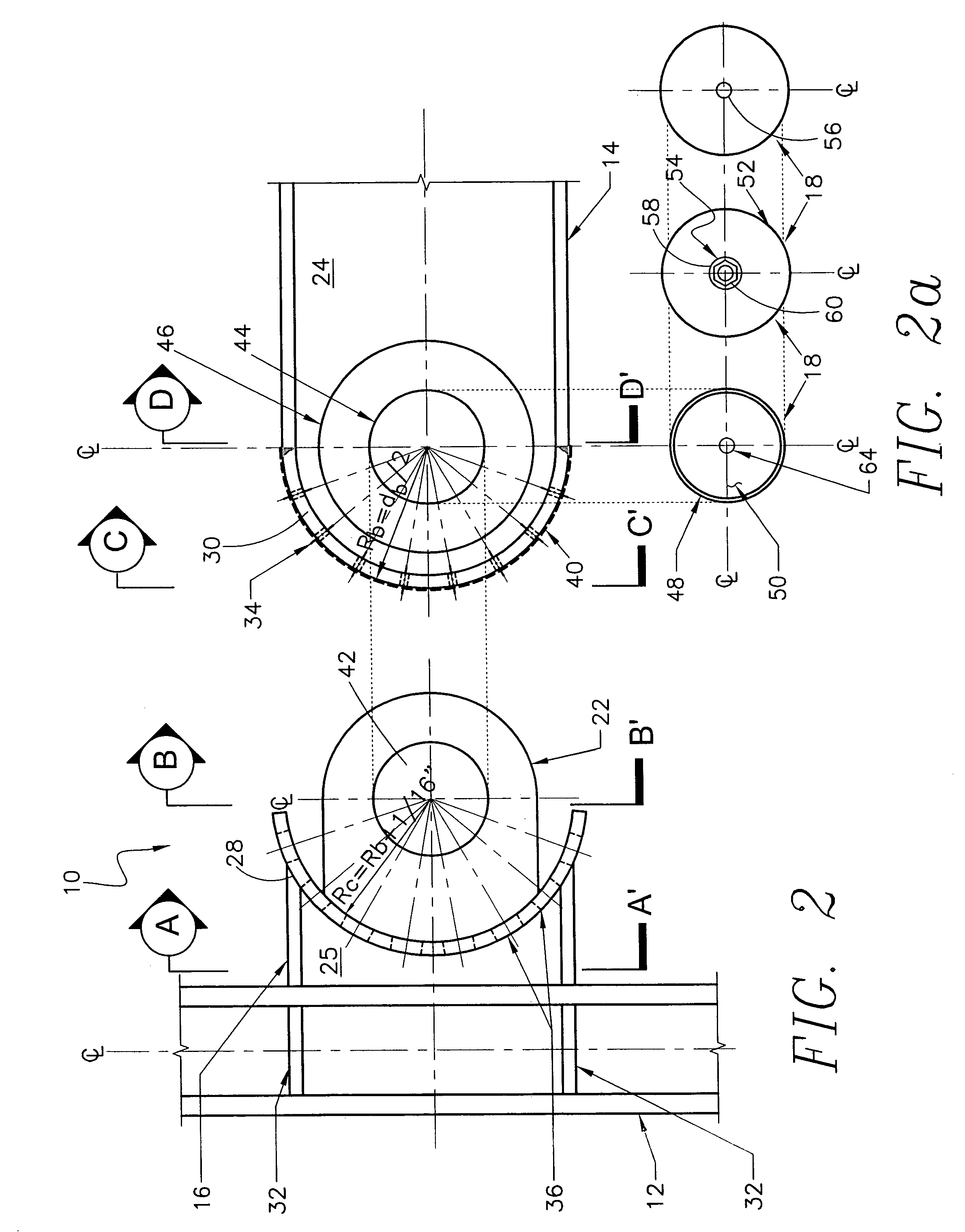Seismic structural device
a seismic structural and joint technology, applied in the direction of girders, rod connections, couplings, etc., can solve the problems of joint rotation, and achieve the effects of improving structure dynamic characteristics, softening structure, and prolonging the fundamental period of structur
- Summary
- Abstract
- Description
- Claims
- Application Information
AI Technical Summary
Benefits of technology
Problems solved by technology
Method used
Image
Examples
Embodiment Construction
[0027]FIG. 1 is a perspective view of one embodiment of the beam-to-column joint assembly 10 of the present invention. As seen in FIG. 1, the beam-to-column joint assembly 10 consists of a structural steel column 12 attached to a structural steel beam 14 via a steel plate assembly 16 that extends between the column 12 and the beam 14. The steel plate assembly 16 is welded directly to the column 12 and is attached to the beam 14 via a pin-fuse joint 20. To create the pin-fuse joint 20, the plate assembly 16 is connected to the beam 14 via a structural steel pipe or pin 18 that extends through the web 24 of the beam 14 and two twin connection plates 22 extending from the plate assembly 16. Additionally, the opposing ends of both the plate assembly 16 and the beam 14 have curved flange end connectors 28 and 30, respectively, that are designed to abut against with one another when the joint 20 is complete. High-strength bolts 26 then extend through the opposing curved flange end connect...
PUM
| Property | Measurement | Unit |
|---|---|---|
| curvature | aaaaa | aaaaa |
| strength | aaaaa | aaaaa |
| slip threshold | aaaaa | aaaaa |
Abstract
Description
Claims
Application Information
 Login to View More
Login to View More - R&D
- Intellectual Property
- Life Sciences
- Materials
- Tech Scout
- Unparalleled Data Quality
- Higher Quality Content
- 60% Fewer Hallucinations
Browse by: Latest US Patents, China's latest patents, Technical Efficacy Thesaurus, Application Domain, Technology Topic, Popular Technical Reports.
© 2025 PatSnap. All rights reserved.Legal|Privacy policy|Modern Slavery Act Transparency Statement|Sitemap|About US| Contact US: help@patsnap.com



